Research & Collections
Monthly Archive: December Rese
True Blue Detectives
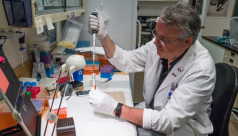
Guest blog written by 2017 Environmental Visual Communication student Connor McDowell
The Royal Ontario Museum has marked yet another first for science with the Blue Whale Project. This achievement could hold keys to the conservation of this majestic, endangered mammal – not to mention a deeper understanding of the unique evolutionary history of the largest living animal on Earth. The beginning of this story starts two thousand kilometers away, on the shores of Newfoundland, Canada with something so small that you can't see it with the naked eye.
The Woman Behind the Biggest Heart in the World

Guest Blog written by 2017 Environmental Visual Communication student Fenella Hood
Knife in hand and knee-deep in rotting blubber, Jacqueline Miller is about to do something that has never been done before: carve out a blue whale's heart for preservation. Enveloped in its stench and racing against decay, she cuts deep into the tissue beneath, sure in her knowledge of anatomy but ever wondering: Will this even work? Read on to learn more about one of the team members behind the world's biggest heart in this blog by EVC student Fennella Hood.
An Interview with Deborah Samuel on "The Extraordinary Beauty of Birds"
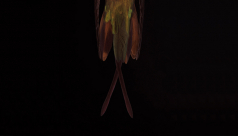
Guest blog by Environmental Visual Communication graduate David Coulson
Deborah Samuel's latest book, “The Extraordinary Beauty of Birds” is a stunning exposé of the ROM ornithology collection; an attempt, in her words, to bring these birds and feathers back to life. Here, EVC graduate David Coulson interviews Deborah about her photography and experiences working in collaboration with the ROM's Natural History collections.
Not just for show: how and why museum specimens are collected
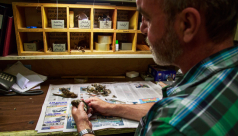
Guest blog by Environmental Visual Communication student Samantha Stephens
The sign on the door seemed quite appropriate. “Abandon all hope ye who enter here.” I imagine that, as this quote from Dante’s Inferno indicates, this might be what hell feels like. As this last barrier swings open and the dim room is revealed, the swarm of hundreds of tiny creatures moving across the concrete floor completes that vision. However, for some of the ROM’s tireless workers, this environment is heaven. Here resides the dermestid beetle colony. These ravenous beetles are eagerly seeking their next meal. Manoeuvring themselves into the crevices of skeletons, they strip the flesh from delicate specimens with more precision and speed than the nimblest of human fingers.
Sebastian Kvist: Leech Hunter

Guest blog by Environmental Visual Communication student Sally McIntyre
When most people think about the Royal Ontario Museum (ROM), they think of dinosaurs or mummies. However, it is the invertebrates that live on the ocean floor and crawl through the soil that make up the most diverse collection at the ROM. So who holds the daunting position of keeper of this vast museum collection? Meet Dr. Sebastian Kvist: Leech Hunter.
ROM Collections Contribute to Checklist of Indian Birds
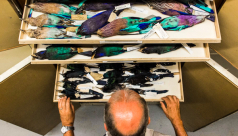
Museum collections are often undervalued and misunderstood. Regular visitors to the ROM don’t get to see what lies behind the public galleries, and yet less than 1% of the ROM’s collections are on display. These collections do far more than gather dust: they are a reference point in time, and, from a natural history perspective, provide a baseline for our understanding of life. I have received a lot of data requests from inside and outside the ROM. Some I can answer, and some I automatically forward along to collections. A group of recent emails stood out in particular...
Behind the Blitz: The Heart of the Data

Guest blog by Angela Telfer, the Data Management Lead for Bio-Inventory and Collections Unit of the Biodiversity Institute of Ontario (BIO), and Database Coordinator for the Ontario BioBlitz program
Ever wonder what happens to all those observations made at the Ontario BioBlitz? Where do your species lists and iNaturalist observations go? Angela has those answers and some tips for making sure that everyone's hard work collecting data in the field is preserved and accessible to everyone for years to come.
Behind the Blitz: Three Young Scientists
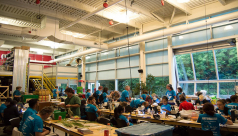
Blog by Nadine Leone, ROM Hands-on Biodiversity Gallery Assistant Coordinator
The first of four blogs in our Ontario BioBlitz: Behind the Blitz series is an interview with three young ROM scientists, who share their favourite highlights from last year's event in the Don Watershed.
ROM Research Colloquium: BLOG-A-THON (Day 1)

Follow five of the ROM’s researchers and learn about what fascinates them, what questions are irking them and how their research helps us figure out the world.
Clay sealings from Edfu, Egypt in the Greek & Roman collection
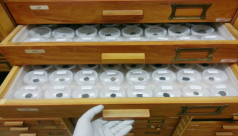
Over a century after they were acquired Ptolemaic artifacts at the Royal Ontario Museum, Greek & Roman collection, get new homes
- 1
- 2
